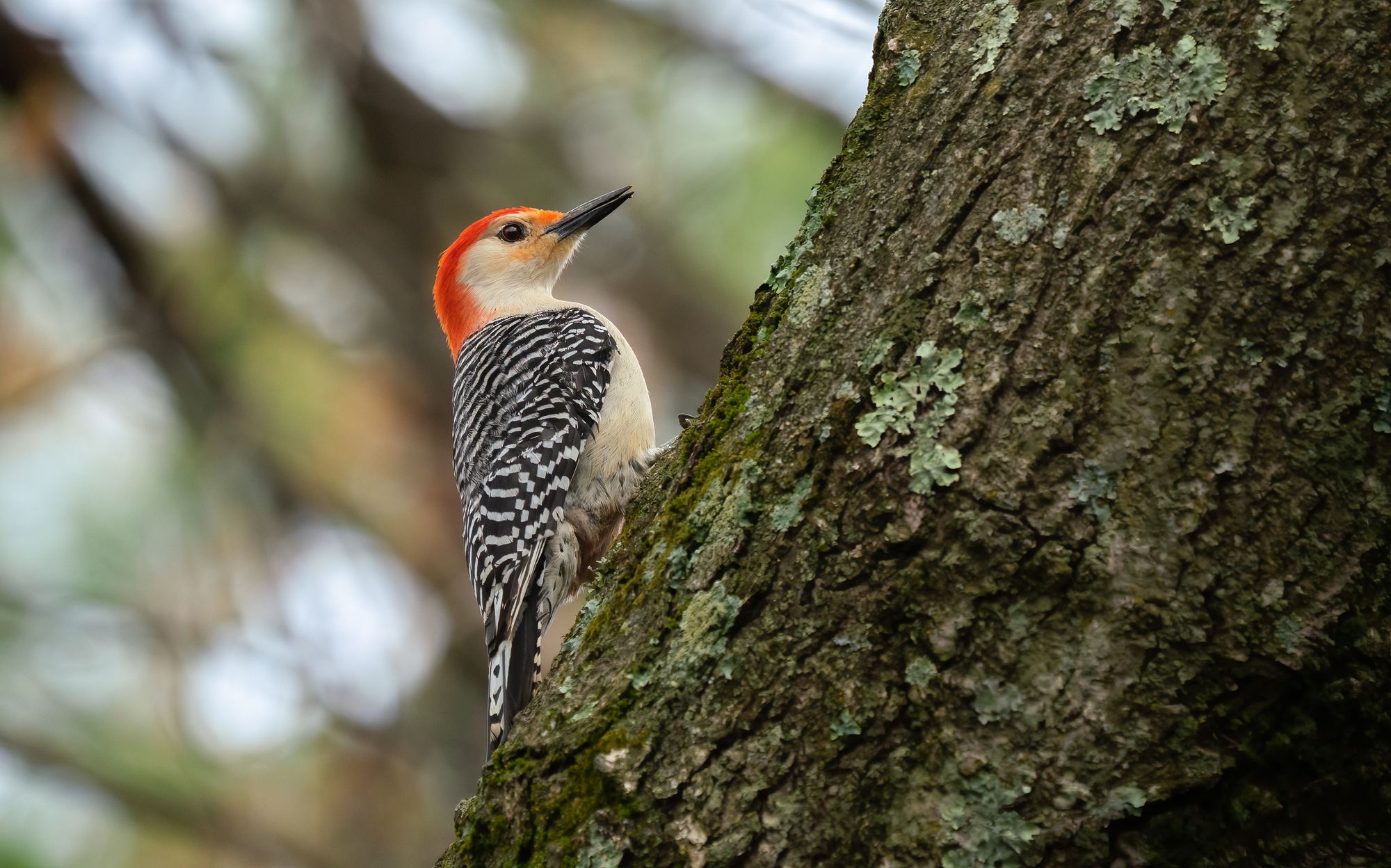
tap tap tap
What's that sound? Just a woodpecker making a racket. We have 8 different species of woodpeckers that live in Florida, and all of them are adept at being loud when they want to be. The ‘laughing' call of the pileated woodpecker, a large bird similar in size to a crow, can often be heard here, though the species is somewhat reclusive and so is usually heard but not seen (although I did manage to spot a pair of them flying by as I drove home the other day). There's also the ‘churring' call of the red-bellied woodpecker and the ‘rattling' cry of the downy woodpecker.
Just as distinctive are the sounds of a woodpecker drumming on a tree for its meal of insects or similar small invertebrates. 'But wait,' I can hear you saying, 'sometimes woodpeckers will drum against my (non-wooden) siding or my drainpipe. Surely there aren't any bugs for them there?' Most likely not, but that's not the only reason they will do that.
Woodpeckers drum on trees to make noise as a sort of territorial call. This sound can travel farther than their vocalizations. Adapting to human encroachment, several species learned that some human structures are even better at amplifying sound than trees.
If you're in Florida, then the culprit is most likely a red-bellied woodpecker like the one pictured. It's our most common woodpecker and well-suited for urban and suburban environments. It also is a bird with a bit of an odd history. Its name dates back to the time of 'shotgun ornithology' when naturalists would shoot birds down so as to examine them up close. The red-bellied woodpecker does have a small red patch on its front, but it's hard to see at a distance, especially because it's usually clinging to a tree with its belly forward. However, they're still very distinctive with the black and white pattern on their backs and their red nape.
So, if you have a frequent noisy woodpecker visitor, don't worry. It's just trying to mark its territory as efficiently as it can. It won't hurt your home, and there probably isn't a population of bugs they're trying to get at. In fact, it means it's adopting your neighborhood as its own. Keep an eye out. Maybe you'll catch it excavating a nest cavity to rear its chicks in.